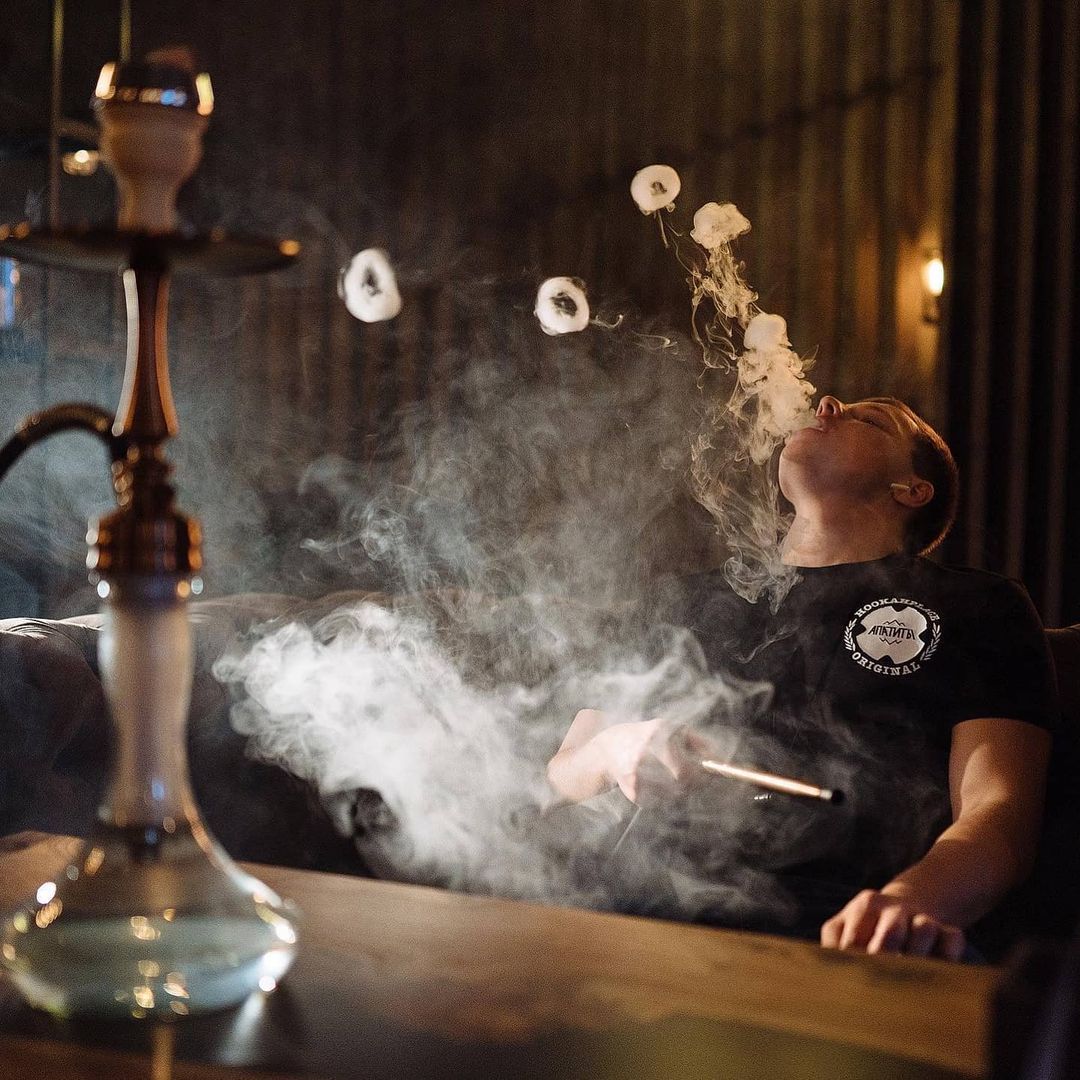The Etiquette of Smoking: When, Where, and How
Smoking, while a personal choice, also comes with a responsibility to follow proper etiquette. Understanding the when, where, and how of smoking can help foster a respectful and considerate environment for both smokers and non-smokers alike. This article will delve into the various aspects of smoking etiquette to provide guidance on how to smoke in a manner that is considerate of others.
Smoking etiquette is crucial, particularly in public places where individuals with different preferences and sensitivities may be present. It is important to respect the rights of non-smokers by adhering to specific guidelines such as smoking only in designated smoking areas, refraining from smoking in close proximity to non-smokers, and properly disposing of cigarette butts.
In social settings, courtesy is key. Always ask for permission before lighting up, and be mindful of the comfort level of those around you. Being considerate includes being conscious of the smoke and smell, as well as practicing good hygiene.

At home, establishing clear smoking rules and boundaries is essential to maintain a harmonious living environment. Adequate ventilation is also crucial to prevent the buildup of smoke and odor. taking responsibility for cleaning up after smoking is a considerate gesture towards others in the household.
In workplaces, it is important to familiarize yourself with the company’s smoking policies and adhere to them. Respect the preferences and comfort of your co-workers, and only smoke in designated areas during designated breaks.
By adhering to proper smoking etiquette, smokers can show respect for the rights and preferences of those around them, creating an environment of consideration and understanding.
1. Smoking in public places:
– Smoking in designated smoking areas shows respect for non-smokers’ rights.
– Properly discarding cigarette butts helps maintain cleanliness and prevents environmental pollution.
2. Smoking in social settings:
– Asking for permission before smoking ensures consideration for others’ comfort.
– Practicing good hygiene, such as using breath fresheners, can minimize the impact of smoking on others.
3. Smoking at home:
– Establishing smoking rules helps create a harmonious environment for non-smoking family members or guests.
– Ventilating the area effectively reduces the lingering smell of smoke.
– Cleaning up after smoking, including ashtrays and surfaces, demonstrates responsibility and consideration.
4. Smoking in workplaces:
– Familiarizing with company smoking policies ensures compliance and respect for the rules.
– Respecting co-workers’ preferences by avoiding smoking near them contributes to a harmonious work environment.
– Taking breaks and smoking in designated areas allows for proper workplace productivity and respect for non-smokers’ rights.
The Etiquette of Smoking: When, Where, and How
When it comes to the etiquette of smoking, knowing the right time, place, and manner is essential. In this section, we’ll dive into the intricacies of smoking in different scenarios. From smoking in public places to social settings, at home, and workplaces, we’ll explore the unspoken rules and considerations for each. So, whether you’re a smoker or non-smoker, join us as we navigate the do’s and don’ts of smoking with style and respect.
Smoking in Public Places
Smoking in public places requires proper etiquette. Here are some important points to keep in mind:
1. Respect smoking laws: Familiarize yourself with local smoking laws to comply with them. These laws protect the health and well-being of everyone in public spaces.
2. Use designated smoking areas: When smoking in public places, use designated areas if available. These areas minimize the impact on non-smokers.
3. Be mindful of others: Remember that not everyone appreciates cigarette smoke. Keep a safe distance from non-smokers.
4. Dispose of cigarette butts properly: Use designated ashtrays to prevent littering and reduce fire hazards.
5. Avoid smoking around children and pregnant individuals: Smoking around them can have serious health consequences. Refrain from smoking in their presence to protect their well-being.
6. Choose well-ventilated areas: Avoid smoking in closed spaces to minimize the impact on others.
By following these guidelines, you can be respectful to others while smoking in public places. Proper etiquette is essential for creating a harmonious environment for everyone.
Smoking in Designated Smoking Areas

Photo Credits @jeremypiven
Smoking in designated smoking areas is important to maintain proper etiquette for smoking. It is crucial to follow guidelines and rules in these areas to respect others and minimize the impact on non-smokers.
Considerations when smoking in designated smoking areas:
1. Observe designated smoking areas: Smoke only in areas specifically designated for smoking. These areas provide a safe and comfortable space for smokers without disturbing non-smokers.
2. Respect non-smokers’ rights: Even in designated smoking areas, be aware of non-smokers nearby. Consider their comfort and ensure the smoke does not inconvenience them.
3. Dispose of cigarette butts properly: Use designated ashtrays or bins in the smoking area to dispose of cigarette butts. Avoid littering or throwing them in non-designated areas, as this harms the environment and creates a negative impression.
By following these guidelines, smokers can maintain proper smoking etiquette and contribute to a harmonious environment for all. Remember, respecting others and adhering to smoking regulations ensure a pleasant experience for everyone, smokers and non-smokers alike.
Respecting Non-Smokers’ Rights
Respecting Non-Smokers’ Rights is crucial for creating a harmonious environment. Here are some guidelines to ensure non-smokers’ rights are respected:
1. Avoid smoking near non-smokers. Keep a safe distance to minimize the impact of secondhand smoke on their health. Note that secondhand smoke can be harmful, even outdoors.
2. Respect designated non-smoking areas. Public spaces have designated smoking areas. Only smoke in these areas to maintain a clean and healthy environment for non-smokers.
3. Properly dispose of cigarette butts. Cigarette butts are unsightly and harmful to the environment. Use designated ashtrays or bins to dispose of them. Don’t litter cigarette butts.
4. Follow smoking restrictions and bans. Many countries and establishments have restrictions or bans. Know and comply with these regulations to ensure non-smokers’ well-being.
5. Consider pregnant women and children. Avoid smoking around pregnant women or in the presence of children. Secondhand smoke can harm these vulnerable groups. Show respect by not smoking around them.
By following these guidelines and respecting non-smokers’ rights, we can create a safe and inclusive environment for all. Let’s prioritize the well-being of others and promote respect and consideration.
Properly Discarding Cigarette Butts
1. Carry a portable or pocket ashtray to properly discard cigarette butts.
2. Avoid throwing cigarette butts on the ground to prevent litter and fire hazards.
3. Utilize designated ashtrays or smoking areas for proper cigarette disposal.
4. Ensure the cigarette is fully extinguished before properly disposing of it in a waste receptacle.
5. Do not throw cigarette butts in bushes, plants, or bodies of water to protect the environment and wildlife.
6. Dispose of cigarette butts responsibly, especially in high-risk fire areas.
7. Keep in mind that cigarette butts take a long time to decompose, so they must be properly discarded.
8. Carry a portable ashtray when outdoors or where designated ashtrays are unavailable.
9. Set a good example and educate others about responsible cigarette disposal to encourage proper disposal.
10. Properly discarding cigarette butts shows respect for the environment, public spaces, and others’ well-being.
Smoking in Social Settings

Photo Credits @hookahplaceofficial
When smoking in social settings, it is important to always consider the comfort and preferences of others. Here are some guidelines that you should follow:
It is essential to ask for permission before lighting up in someone else’s home or car. Respecting the rules set by the host and being considerate of other guests who may not appreciate smoke is crucial.
It is important to be mindful of others’ comfort. Make sure to position yourself away from non-smokers and avoid blowing smoke in their direction. By doing so, you can ensure that everyone can enjoy the social setting without any discomfort.
Another aspect to keep in mind is practicing good hygiene. Freshen your breath by using breath mints or gum and make sure to wash your hands afterward to remove any lingering smell. This will help in creating a pleasant environment for everyone involved.
Remember that not everyone enjoys or tolerates smoking. Therefore, being considerate of others’ preferences and comfort is absolutely crucial in order to maintain a positive social environment.
By incorporating these guidelines, you can ensure that smoking in social settings is done in a respectful and considerate manner.
Asking for Permission
Approach the individual or group politely and respectfully. Acknowledge your desire to smoke. Ask if they are comfortable with you smoking in their presence. Listen attentively to their response and be open to their preferences.
If they express discomfort or ask you not to smoke, respect their wishes. If they are fine with you smoking, ensure there are no specific restrictions or rules in the current environment. Inquire if they would prefer you to smoke in designated areas nearby.
Be mindful of your behavior and its impact on others if they give you permission to smoke. Consider the proximity of individuals who may be sensitive to smoke, such as pregnant women or children. Be aware of any laws or regulations regarding smoking in the specific location.
Dispose of your cigarette butt properly and responsibly using designated ashtrays or appropriate containers. Thank the individual or group for their understanding and cooperation. Refrain from smoking if they change their mind or express discomfort during your smoking session.
Being Mindful of Others’ Comfort
Being mindful of others’ comfort is crucial for practicing good smoking etiquette. It is important to maintain a safe distance of at least 20 feet from non-smokers in public or social settings. This helps to reduce health risks and discomfort from secondhand smoke. It is essential to avoid smoking around children, as they are especially vulnerable to the harmful effects of secondhand smoke. Whether it’s in enclosed spaces like cars or homes, it’s important to be mindful of their presence and refrain from smoking around them.
In social settings or private residences, it is considered considerate to ask for permission before smoking. This shows respect for individuals who may have health conditions or personal preferences that make them uncomfortable with smoking nearby. It is also crucial to respect designated smoking areas in public places. By using these designated areas, the impact of secondhand smoke on others can be minimized. It is important to avoid smoking in non-smoking areas or areas where smoking is prohibited.
Properly disposing of cigarette butts is another vital aspect of good smoking etiquette. Using designated ashtrays or appropriate bins to dispose of cigarette butts is essential. Flicking them on the ground or out of windows should be avoided, as it not only looks unsightly but also poses environmental hazards.
Being aware of your surroundings is key. Pay attention to those around you, and if someone expresses discomfort or asks you to put out your cigarette, respect their wishes. Being attentive to your surroundings and prioritizing others’ comfort is essential for practicing good smoking etiquette.
By incorporating all of these guidelines into your smoking habits, you can create a considerate and respectful smoking environment that takes into account others’ comfort.
Practicing Good Hygiene
Practicing good hygiene is of utmost importance when smoking. It plays a significant role in maintaining personal cleanliness and demonstrating respect for others. Here are some essential considerations for upholding good hygiene while smoking:
1. Keep hands clean: Prior to and after smoking, make sure to thoroughly wash your hands with soap and water. This not only eliminates the smell of smoke but also prevents the transfer of harmful chemicals.
2. Utilize breath fresheners: After smoking, mitigate the impact of cigarette smoke on your breath by using mints, chewing gum, or mouthwash.
3. Dispose of cigarette butts properly: Ensure that you completely extinguish cigarettes and dispose of the butts in designated ashtrays or bins. Avoid littering or leaving cigarette butts in public spaces.
4. Take care of your clothing: Regularly launder and air out your garments to minimize the lingering smell of smoke. You can use fabric fresheners or sprays to eliminate any residual odor.
5. Maintain oral hygiene: Brush your teeth, floss, and use mouthwash consistently to reduce the adverse effects of smoking on your teeth and gums.
By incorporating good hygiene practices while smoking, you can minimize the impact of smoke and its associated odors on yourself and those around you. This showcases thoughtfulness towards others and contributes to the creation of a cleaner and more pleasant environment.
Smoking at Home

Photo Credits @adamfranzino
When considering smoking at home, it is important to keep in mind the following:
- Establish Smoking Rules: It is crucial to establish clear guidelines regarding smoking at home. This includes determining whether smoking is permitted indoors or only in specifically designated areas.
- Ventilate the Area: To reduce the concentration of smoke and minimize its impact on non-smokers, it is essential to ensure proper ventilation in the designated smoking area.
- Clean up After Smoking: To maintain cleanliness and prevent fire hazards, always make sure to dispose of cigarette butts and ash in designated ashtrays or containers.
It is important to remember that smoking at home is a personal choice. It is equally important to respect the preferences and health of others who live with you or visit your home. By establishing rules, ensuring proper ventilation, and cleaning up after smoking, you can create a harmonious environment for everyone in your household.
Establishing Smoking Rules
When establishing smoking rules, consider both smokers and non-smokers. Here are the steps to follow:
1. Evaluate the space: Determine and ventilate designated smoking areas to minimize secondhand smoke.
2. Set clear boundaries: Communicate the rules clearly, including consequences for smoking outside the designated areas.
3. Respect non-smokers: Place smoking areas away from entrances, windows, and common areas.
4. Enforce proper disposal: Provide receptacles for cigarette butts in designated smoking areas.
5. Promote awareness: Educate smokers about the health impacts of smoking and support quitting.
6. Address conflicts: Encourage open communication and find compromises that respect both parties.
By following these steps, you can establish harmonious smoking rules.
Ventilating the Area
Ventilating the area is crucial when it comes to smoking etiquette. It not only helps to minimize the impact of smoke on others but also creates a more comfortable environment. To ensure proper ventilation while smoking, you can follow these steps:
1. Choose an outdoor location: Opt for an open-air area to disperse the smoke and prevent it from lingering around others.
2. Position yourself away from non-smokers: It’s important to stand or sit away from non-smokers to avoid the smoke drifting towards them. This demonstrates respect for their personal space and reduces the chances of them inhaling secondhand smoke.
3. Create airflow: If you’re smoking indoors or in an enclosed space, make sure to promote airflow. Open windows or use fans to circulate fresh air and carry the smoke outside.
4. Consider smoking accessories: To further reduce odors and pollutants associated with smoking, you can utilize smokeless ashtrays or air purifiers.
5. Dispose of cigarette butts properly: Before disposing of your cigarette, make sure to fully extinguish it and use designated ashtrays or cigarette disposal units. Avoid throwing cigarette butts on the ground.
By following these steps, you contribute to creating a healthier and more considerate smoking environment for both smokers and non-smokers. Ventilating the area plays a crucial role in showing respect for others and minimizing the impact of smoke on the surrounding environment.
Cleaning up After Smoking
When smoking, it is important to clean up after oneself in order to respect others and maintain hygiene. It is crucial to dispose of cigarette butts properly by extinguishing and placing them in an ashtray or cigarette disposal unit, thus avoiding littering.
It is recommended to clean ashtrays regularly to prevent ash and odor buildup. To minimize the smell, one can also use odor-reducing sprays or air fresheners in the designated smoking area.
In order to eliminate cigarette odors from clothing, one can either wash the clothes or use fabric fresheners. It is necessary to keep smoking areas tidy by regularly sweeping or vacuuming areas like balconies or patios to maintain cleanliness.
In public places, it is advisable to use designated smoking areas for disposing of cigarette waste. It is important to be mindful of others’ comfort and avoid disturbing or inconveniencing them when smoking in public.
Last but not least, practicing proper hygiene by washing hands and brushing teeth after smoking can help remove the residual smell or taste of smoke.
Smoking in Workplaces

Photo Credits @farhanalikhann
In workplaces, it is important to familiarize yourself with the company smoking policies and adhere to them. Take note of designated smoking areas and make sure to respect co-workers’ preferences by avoiding smoking near them if it bothers them. It is also advisable to take smoking breaks only in the designated areas.
One should be mindful of the effects of smoking in the workplace, as it can negatively impact air quality and the health of both smokers and non-smokers. Therefore, it is essential to exercise judgment and maintain a healthy work environment.
For those who are considering quitting smoking, workplaces can provide valuable support and resources for smoking cessation. It is highly recommended to take advantage of these opportunities in order to improve overall health. It is crucial to be considerate of pregnant individuals or children and refrain from smoking around them, as it may pose health risks and is generally seen as inconsiderate.
Incorporating good hygiene practices is also important when smoking at work. Always dispose of cigarette butts properly and make sure to keep smoking areas clean. It is essential to avoid being selfish when smoking around non-smokers, and to consider their well-being and preferences.
Staying informed about smoking laws, restrictions, and health risks associated with smoking is crucial. Valuable information can be found in published medical journals, which can help individuals make more informed decisions.
Familiarizing with Company Smoking Policies
Familiarize yourself with your company’s smoking policies in order to understand the rules and regulations. This will help prevent conflicts or misunderstandings. It is important to determine if smoking is allowed or if there are designated areas. Some companies have strict no-smoking policies, while others allow smoking in specific areas.
Respecting the preferences of your co-workers is crucial. If smoking is allowed, it is essential to be considerate of non-smokers. Find a designated area that is away from them to minimize their exposure to second-hand smoke.
Make sure to follow your company’s policies by taking breaks and smoking only in designated areas. Avoid smoking in areas that are not designated or near entrances and exits. By doing so, you can maintain a healthy and respectful work environment for non-smokers.
Understanding your company’s smoking policies is extremely important. It is essential to respect the preferences of your co-workers and take breaks in designated areas to ensure a harmonious work environment for everyone.
Respecting Co-workers’ Preferences
Respecting co-workers’ preferences is crucial for smoking etiquette in workplaces. Remember that not everyone is comfortable with smoking or being exposed to secondhand smoke. Follow these guidelines:
1. Be considerate: Always respect others’ preferences and ask for permission before smoking in common areas. Find designated smoking zones approved by the company.
2. Respect personal space: Avoid smoking near non-smoking co-workers or those who have expressed discomfort. Keep a distance from entrances, windows, and ventilation systems to prevent smoke from entering the workspace.
3. Communicate and collaborate: Familiarize yourself with your company’s smoking policies and guidelines to ensure a healthy work environment. By respecting and adhering to these policies, you can create a harmonious workplace.
4. Timing and breaks: Take breaks in designated smoking areas or during allotted break times. Avoid smoking for prolonged periods that may disrupt your workflow or inconvenience non-smoking co-workers.
5. Eliminate odor: Practice good personal hygiene after smoking to reduce stale smoke odor. Use air fresheners, breath mints, or wash your hands and face to minimize the lingering smell.
Following these guidelines will help create a respectful environment for all employees, regardless of smoking preferences, and promote a harmonious and healthy workplace.
Taking Breaks and Smoking in Designated Areas

Photo Credits @hookahplaceofficial
The etiquette of taking breaks and smoking in designated areas is crucial when it comes to smoking behavior. Here are some guidelines to follow for taking breaks and smoking in designated areas:
1. Familiarize yourself with the designated smoking areas in your workplace. These areas are specifically allocated for smokers to have their breaks and enjoy a cigarette. Make sure you are aware of any regulations or rules related to smoking in these areas.
2. Respect the preferences of your co-workers. It’s important to be considerate towards individuals who may be sensitive to smoke or have health conditions that can be aggravated by it. If someone requests you to refrain from smoking near them or in their vicinity, please honor their request.
3. Make sure to take regular breaks in the designated smoking areas. Breaks are essential for productivity and stress relief, but it’s crucial to limit smoking to these designated areas to avoid impacting non-smokers.
4. Dispose of cigarette butts properly. Utilize the provided ashtrays or appropriate containers for disposing of cigarette butts. It is important not to litter or leave cigarette butts in common areas or outside the designated smoking areas.
5. Be mindful of the lingering effects of stale smoke. When you return from a cigarette break, try to minimize the smell of smoke by using breath fresheners, washing your hands, and if necessary, changing your clothes. This will help reduce the impact on non-smokers.
By adhering to these guidelines, you can ensure that you show consideration for others while taking breaks and smoking in designated areas. Always remember that exercising proper judgment and displaying respect for others are fundamental in maintaining a harmonious environment.
Frequently Asked Questions
What is the etiquette regarding smoking in cars?
Smoking in cars is generally discouraged, especially when traveling with children, due to the health risks associated with secondhand smoke. It is recommended to use alternative methods or refrain from smoking altogether while inside a car.
How should I ask permission to smoke at a party?
When attending a party, it is important to use proper judgment and ask the host for permission to smoke, either inside or outside the venue. Respecting the host and the preferences of non-smokers is essential while engaging in social situations.
What are some common cannabis courtesies to follow?
When participating in cannabis consumption, it is essential to adhere to common courtesies. These include following the “puff, puff, pass” rule, respecting the passing rotation, being time-sensitive, avoiding contaminating the joint, and adhering to the rule of “he who rolls it, sparks it.”
How should I dispose of cigarette butts?
Proper disposal of cigarette butts is essential to maintain cleanliness and respect for the environment. It is recommended to hold onto cigarette butts until a trash bin is available. Once a trash bin is present, ensure the butts are properly disposed of in the designated receptacle.
Why is it important to smoke outdoors whenever possible?
Smoking outdoors is crucial to prevent exposing others to secondhand smoke, which can lead to various health issues, including lung cancer and respiratory infections. By smoking outside, you reduce the risk of negatively impacting the health and comfort of those around you.
How should I respond to polite non-smoking requests or rude comments?
It is advised to respond appropriately and respectfully to polite non-smoking requests and stay calm when faced with rude comments. Acknowledge the sensitivity and feelings of others and adhere to their preferences.
